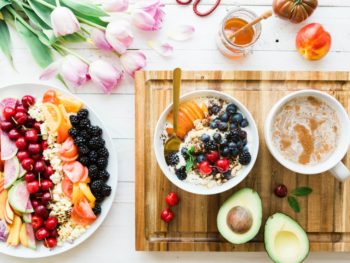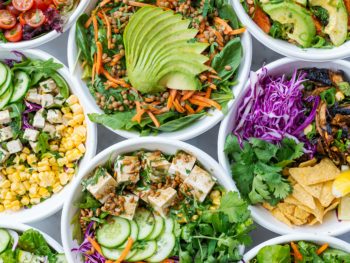Below is my post for Huffington Post, Size Matters! 10 simple strategies to overcome portion distortion.
You can also read it HERE.
I’ve been convinced for years that oversize food portions are one of the leading contributors to obesity.
When results of the National Health and Nutrition Examination Survey (NHANES), a federal survey assessing the health of Americans, were released back in the mid-1990s with the scary statistic that the average American adult gained 8 pounds, I immediately suspected that it was due, at least in part, to growing food portions. However, back then, virtually no one was talking about portion sizes, at least as it related to obesity.
So I decided to conduct my doctoral dissertation exploring U.S. portion sizes and trace the history of food portions. Indeed, my research found that American food portions began to explode in the 1980s continuing through the 1990s and into the present. This increase in portion sizes parallels rising obesity rates, and is a perfectly logical explanation to explain rising obesity rates in the U.S.
Now, 20 years later, a comprehensive report from researchers at the Behaviour and Health Research Unit (BHRU), University of Cambridge, analyzed results of over 60 studies involving more than 6,700 participants and found that larger portions and oversize tableware contribute to overeating. The study, published on Sept. 14, 2015, in the Cochrane Database of Systematic Reviews, found that people consumed more food and drink when given bigger portions, plates, or silverware. And they ate more food regardless of if they were thin or overweight, male or female, hungry or not hungry.
We know that eating too much can lead to obesity, which increases our risk for chronic diseases, including heart disease, diabetes and cancer.
As a long-time portion size researcher and educator, I believe that if we can make changes to our environment to reduce the availability and appeal of large portions and practice portion-control strategies on an individual level, we can make great strides to reduce obesity.
The University of Cambridge researchers concluded that efforts to reduce portion sizes could reduce caloric intake by up to 29 percent and (527 calories a day) among U.S. adults and up to 16 percent among U.K. adults. That is pretty significant and can make a huge difference in helping us all slim down!
As written in the University of Cambridge news release: “Our findings highlight the important role of environmental influences on food consumption. Helping people to avoid ‘overserving’ themselves or others with larger portions of food or drink by reducing their size, availability and appeal in shops, restaurants and in the home, is likely to be a good way of helping lots of people to reduce their risk of overeating,” said the study’s lead author, Dr. Gareth Hollands, a behavior and health researcher at the University of Cambridge.
“There has also been a tendency to portray personal characteristics like being overweight or a lack of self-control as the main reason people overeat,” Dr. Hollands added.
The study suggests that legislation, price incentives, and marketing strategies may be needed to help bring about significant reductions in our food portions. As I wrote here, I couldn’t agree more.
In the meantime, here are some simple things you can do to combat portion distortion.
1. Purchase single-serving portions.
2. Eat off of your grandmother’s dishes. They are sure to be smaller than your current plates.
3. Use smaller glasses and utensils too.
4. Avoid serving food family-style. Plate out your portion in the kitchen. If you are still hungry, you can get up for more.
5. Fill up half of your plate with nutritious fruits and vegetables. No one got fat eating too many carrots or berries.
6. When eating out, share an entrée with your dinner companion. Order an extra salad or vegetable side dish.
7. Wrap up leftovers. They make a great accessory.
8. Steer clear of all-you-can eat meals and deals. Resist the bargain. And remember, volume does not mean value!
9. Eat mindfully–sitting down, without distractions such as watching TV and talking on the phone. And do not straight out of the container.
10. And, finally, wherever you are, eat slowly and enjoy your company.
For more strategies to avoid oversize portions, I offer tips here and here.
We would love to hear your tricks on how to overcome oversize portions.
Follow Dr. Lisa Young on Twitter: www.twitter.com/drlisayoung




